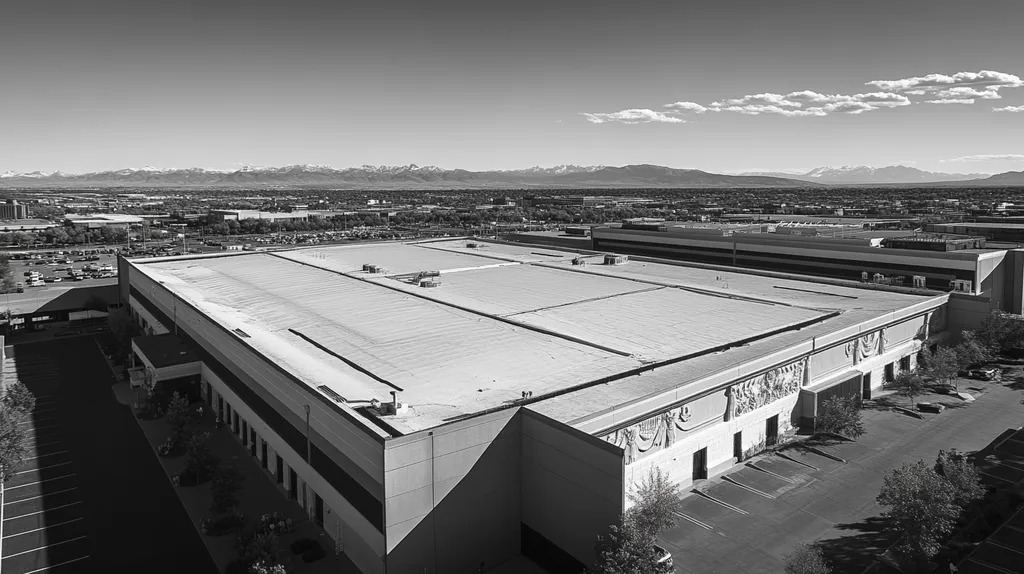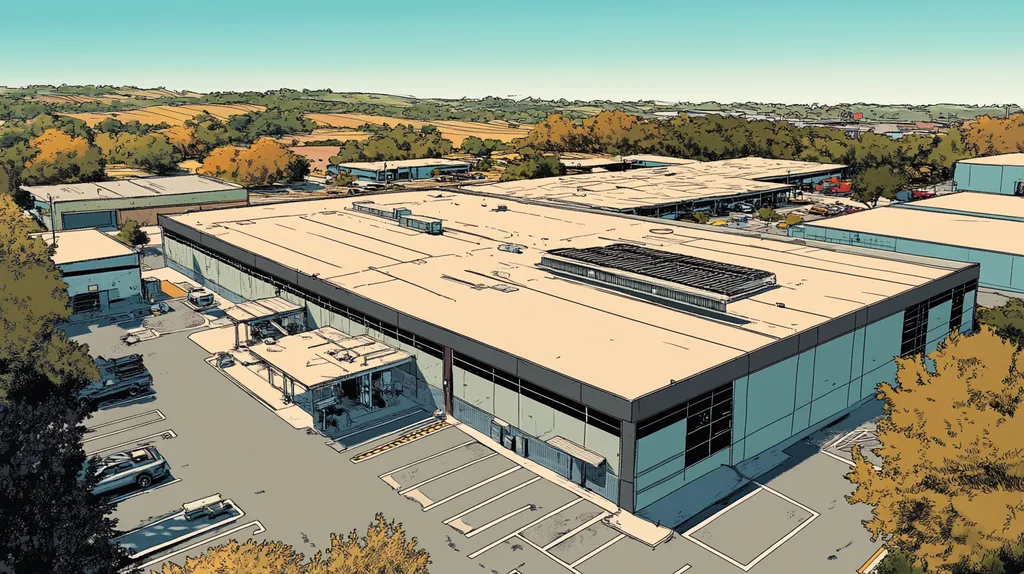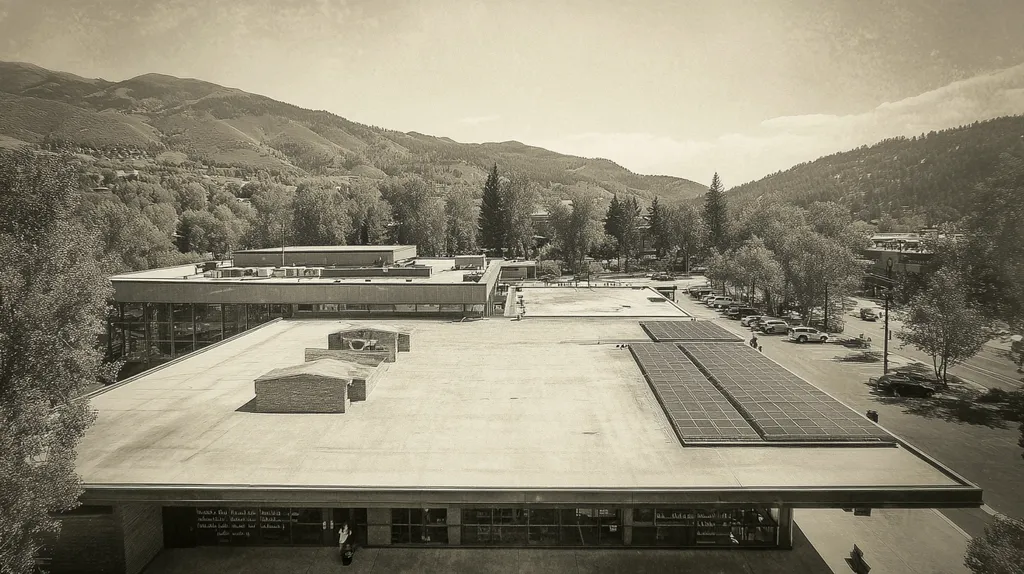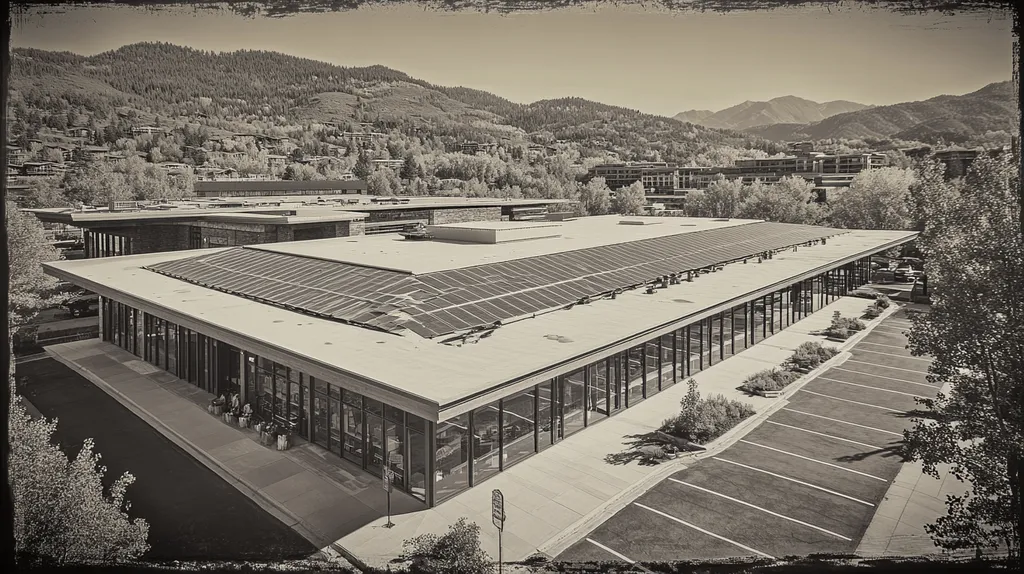Every year, billions of dollars in roof coatings literally peel away because someone skipped proper surface preparation. Industry studies show that 80% of all coating failures trace directly back to inadequate prep work.
With coating systems often exceeding $100,000 for large industrial facilities, the stakes couldn’t be higher. Yet many facility managers still treat surface preparation like an optional upgrade rather than the foundation of coating success.
This comprehensive guide breaks down the critical steps, tools, and techniques required to properly prepare industrial roofs for coating application – because the most expensive coating in the world won’t stick to a surface that isn’t ready to receive it.
SECTION 1: FUNDAMENTAL CONCEPTS
Want to know the fastest way to waste $50,000 on a roof coating? Skip the surface prep. Every year, facility managers torch perfectly good coating materials by rushing past this critical step. Studies show that inadequate surface preparation accounts for over 80% of premature coating failures. Before you even think about cracking open that first bucket of coating, let’s explore why proper preparation isn’t just another checkbox – it’s the difference between a roof that lasts 15 years and one that fails in 15 months.
Importance of Surface Preparation for Longevity
Think of surface preparation as the foundation of your coating system. Just as you wouldn’t build a house on shifting sand, you can’t expect coating materials to bond with dirty, compromised, or unstable surfaces.
The physics is simple: coatings need something solid to grab onto. A properly prepared surface creates thousands of microscopic anchor points for the coating to bond with, forming an impenetrable barrier against the elements.
Most coating manufacturers won’t even honor their warranties without documented surface preparation. That’s not them being difficult – it’s them protecting you from virtually guaranteed failure.
Temperature control during application is equally critical for proper adhesion. Johns Manville specifies that coating applications must occur when ambient temperatures remain between 40°F and 110°F for at least 24 hours to ensure optimal performance. (source: Johns Manville)
Key Roof Conditions Demanding Pre-Coating Attention
Your roof isn’t just a flat surface – it’s a complex system of seams, penetrations, and transitions. Each of these areas requires specific attention before coating.
Standing water is your enemy number one. If your roof has puddles lasting more than 48 hours after rain, you’ve got ponding issues that need addressing before any coating goes down.
Those tiny blisters and alligatoring you see? They’re not just cosmetic. These surface defects are warning signs of underlying problems that will compromise your coating’s integrity if left untreated.
Pay special attention to membrane seams and flashings. These high-stress areas are where most leaks start, and they need proper reinforcement during the preparation phase.
Common Contaminants to Identify and Remove
Your roof is basically a giant dirt magnet. Every day, it collects industrial fallout, organic debris, oils, and chemical residues that will sabotage coating adhesion.
That chalky surface on your existing roof? It’s not just aging – it’s oxidation creating a barrier between your new coating and the substrate. This needs to be thoroughly removed.
Biological growth like algae and fungi don’t just sit on your roof – they actively eat into it. Standard pressure washing won’t cut it; these require specific biocides to ensure complete removal.
Don’t forget about invisible contaminants. Surface tension-reducing agents from previous cleaning attempts can lurk unseen, creating adhesion nightmares that won’t show up until your coating starts peeling.
SECTION 2: SYSTEM COMPONENTS
Let’s get real about what’s at stake here: A $100,000 coating system is only as good as what’s underneath it. Every year, millions of dollars literally peel away because someone skimped on components or rushed through selection. Your coating system isn’t just paint – it’s a carefully engineered defensive line between your building and everything Mother Nature throws at it. Before you pull the trigger on materials, let’s make sure you’re not bringing a water pistol to a hurricane fight.
Overview of Roof Coating Materials and Types
The world of roof coatings isn’t just white goop in different buckets. Each formulation is a specialized weapon designed for specific battlefield conditions. Your choice here can mean the difference between a roof that shrugs off UV rays for decades and one that surrenders to the sun in months.
Acrylic coatings are the Swiss Army knife of the industry – versatile, cost-effective, and great for moderate climates. But throw them into a ponding water situation, and you might as well be using watercolor paint.
Silicone coatings laugh at standing water and UV exposure, but they’re dust magnets that can look like a chalk factory exploded after a few years. They’re perfect for desert environments where washing isn’t an issue.
Polyurethane coatings are the tanks of the coating world – tough, impact-resistant, and chemical-proof. But they’re also the divas, demanding perfect application conditions and zero moisture during installation.
Selecting the Right Primer for Substrate Compatibility
Surface preparation standards aren’t just bureaucratic busywork – they’re your insurance policy against coating failure. Different substrates demand specific preparation approaches to ensure proper adhesion and longevity. (source: Kramer Industries)
Metal roofs need primers that can tackle rust at the molecular level. A basic primer here is like putting a Band-Aid on gangrene – it might look better temporarily, but the problem’s still eating away underneath.
Concrete substrates are thirsty beasts that will drink your coating dry if not properly primed. The right primer here acts like a bouncer, controlling what gets in and what stays out.
Modified bitumen membranes need primers that can bridge the gap between their oily surface and your water-based coating. Skip this step, and you’ll create the world’s most expensive rooftop slip-n-slide.
Essential Tools and Equipment for Effective Surface Prep
Your surface prep tools aren’t just expenses – they’re investments in coating success. That bargain-bin pressure washer might save you a grand today, but it’ll cost you fifty times that when your coating starts peeling next summer.
High-pressure washers need to hit at least 3,000 PSI to blast away surface contaminants effectively. Anything less is just giving your roof an expensive shower.
Moisture meters aren’t optional – they’re your early warning system. That $300 meter can save you from a $30,000 coating failure caused by trapped moisture.
Surface profile gauges might look like medieval torture devices, but they’re your best defense against under-prepped substrates. Without proper surface profile measurement, you’re literally coating blind.
Don’t forget about safety equipment – the best coating job in the world isn’t worth a trip to the emergency room. Proper respirators, fall protection, and chemical-resistant gear aren’t where you want to start pinching pennies.
SECTION 3: IMPLEMENTATION METHODS
Want to know the most expensive way to prep a roof? Do it twice because you botched it the first time. Every year, countless facility managers waste six figures redoing failed coating jobs that proper prep could have prevented. We’re not talking about perfectionism here – we’re talking about the difference between a coating that bonds like superglue and one that peels off like cheap wallpaper. Let’s cut through the marketing fluff and get down to what actually works.
Step-by-Step Procedures for Surface Cleaning
First things first: ditch that wimpy pressure washer from the hardware store. You need industrial-grade equipment pushing at least 3,000 PSI to blast away the years of industrial fallout, oxidation, and biological growth eating into your roof.
That “clean” roof surface? It’s lying to you. Even after pressure washing, invisible surface tension reducers and chemical residues are plotting your coating’s demise. You need specialized degreasers and surfactants to expose these hidden saboteurs.
Temperature matters more than you think. Cleaning when it’s too hot cooks chemicals onto your roof before they can work. Too cold, and they’re about as effective as washing your car with ice cubes.
Don’t skip the rinse test. If water beads up anywhere on your cleaned surface, your coating’s already in trouble. Keep cleaning until water sheets evenly across the entire roof.
Rust and Corrosion Removal Techniques
That surface rust isn’t just cosmetic – it’s cancer for your roof. And like cancer, catching it early makes all the difference. Start with wire brushing to remove loose scale, but don’t stop there.
Chemical rust converters aren’t just another upsell – they’re your secret weapon. They actually transform rust into a stable compound that primers can bond to. But careful – using the wrong converter can make things worse.
Think you can just paint over that pitted metal? Think again. Those microscopic holes are time bombs waiting to blow your coating job. Fill them properly with epoxy or you’ll be back here next year.
Flash rust is sneaky – it can form within hours of cleaning on humid days. Keep a rust inhibitor handy and don’t let cleaned metal sit exposed overnight.
Best Practices for Applying Protective Primers
Primer isn’t just expensive paint – it’s your coating’s handshake with the substrate. Using the wrong primer is like trying to glue oil to water. Match your primer to both your substrate and your topcoat or watch your warranty vanish.
Temperature and humidity aren’t suggestions – they’re laws. Apply primer outside the manufacturer’s specified conditions and you might as well be throwing money off the roof. Most primers need surface temps between 50°F and 90°F to cure properly.
Thickness matters more than coverage. A primer that’s too thin is worse than no primer at all. Invest in proper mil gauges and check frequently during application.
Give your primer time to cure – real time, not “it looks dry” time. Rushing this step is like pulling your bread out of the oven early – it might look done on the outside, but it’s still raw in the middle.
Test adhesion before moving forward. A simple pull test now can save you from a massive failure later. If the primer peels cleanly from the substrate, stop everything and start investigating why.
SECTION 4: MAINTENANCE REQUIREMENTS
Here’s a sobering statistic: 90% of premature roof coating failures trace back to neglected maintenance. Every year, facility managers flush millions down the drain by treating their coated roofs like set-it-and-forget-it appliances. That shiny new coating system you just invested six figures in? Without proper maintenance, it’s about as protective as an umbrella made of tissue paper.
Routine Inspection Schedules for Coated Roofs
That semi-annual walkthrough you’re doing? It’s not an inspection – it’s a liability waiting to happen. Real roof inspections need systematic documentation, not just a quick glance and a thumbs-up.
Your coating warranty probably demands quarterly inspections, and there’s a reason. Coating degradation accelerates exponentially once it starts – catch it early, you’re looking at a patch job. Miss it, and you’re shopping for a new roof.
Weather events aren’t on your inspection schedule. After every major storm, someone qualified needs boots on that roof checking for impact damage, wind-lifted areas, and clogged drains.
Document everything. Those smartphone photos of suspicious areas aren’t just digital clutter – they’re your timeline of developing issues and your ammunition when warranty claims come into play.
Cleaning Protocols to Preserve Roof Performance
That layer of dirt on your roof isn’t just aesthetically offensive – it’s actively destroying your coating. Industrial fallout, organic debris, and atmospheric pollution create a caustic soup that eats through protective layers.
Forget the janitor with a push broom. Professional roof cleaning requires specific detergents, controlled pressure, and proper drainage management. Using the wrong cleaning products can be worse than not cleaning at all.
Those black streaks aren’t just cosmetic – they’re biological warfare against your coating. Algae and fungi literally eat certain coating components for breakfast. Hit them with the right biocide or watch them turn your roof into their all-you-can-eat buffet.
Standing water after cleaning is your enemy. Every puddle is a potential failure point, concentrating chemicals and accelerating degradation. Proper squeegee work isn’t optional – it’s survival.
Addressing Minor Repairs Before Major Issues Emerge
That tiny blister you’re ignoring? It’s not going to pop like a bubble – it’s going to spawn dozens more, then delaminate half your roof. Minor repairs are like dental work – expensive and annoying now, catastrophic if postponed.
Surface cracks don’t stay surface-level. Every thermal cycle, every rainstorm drives moisture deeper into that crack. By the time you see interior damage, you’re already looking at major reconstruction.
Stop treating caulk like magical repair putty. Proper repairs need compatible materials, proper surface preparation, and correct application techniques. That tube of construction adhesive from the hardware store isn’t saving you money – it’s just delaying the inevitable.
Create a repair tracking system that works. Every patch, every seam reinforcement, every touch-up needs documentation. Without a repair history, you’re playing whack-a-mole with recurring problems instead of solving root causes.
SECTION 5: PERFORMANCE METRICS
Let’s get real about performance metrics – they’re not just numbers to impress your boss. Every year, facility managers waste millions on coatings that fail because nobody bothered to measure what matters. You wouldn’t buy a car without checking the specs, so why gamble six figures on a roof coating without hard data? Stop treating metrics like optional paperwork and start using them as your early warning system against catastrophic failure.
Measuring Coating Adhesion and Uniformity
That satisfying “pop” when you peel back a test patch? It’s the sound of your coating failing its most basic job. If your adhesion testing isn’t leaving substrate material stuck to the coating, you’ve got expensive problems brewing.
Those shiny spots and dull patches aren’t just cosmetic – they’re screaming that your coating thickness is all over the map. Every variance is a weak point waiting to fail under the next thermal cycle.
Your mil gauge readings should be as consistent as a metronome. Variation of more than 2 mils between readings means someone’s playing fast and loose with your coverage rates.
Those little pinholes you’re seeing? They’re not “within spec” – they’re future leaks in disguise. If you can spot holidays with the naked eye, imagine what that coating’s doing under a microscope.
Monitoring for Weathering and Environmental Impact
That chalky residue isn’t normal aging – it’s your coating literally disintegrating in slow motion. UV degradation doesn’t take vacations, and neither should your monitoring program.
Think your coating can handle whatever nature throws at it? Those micro-cracks from thermal shock say otherwise. Every 10°F temperature swing is literally stretching your coating to its breaking point.
Chemical exposure isn’t just about obvious spills. That industrial exhaust from three buildings over? It’s creating an acid bath on your roof every morning when dew condenses.
Stop treating ponding water like it’s just taking a rest. Every puddle is a concentrated chemical experiment eating through your coating at accelerated rates.
Assessing Energy Efficiency and Reflectivity Benefits
That dark streak developing across your roof isn’t just dirt – it’s money evaporating into your cooling bills. A 10% drop in reflectivity can spike your summer energy costs by thousands.
Your reflectometer readings aren’t just numbers for the sustainability report. Every point drop below 0.65 is like installing a giant solar heater on your roof.
Those infrared hot spots showing up on thermal scans? They’re not abstract art – they’re giant arrows pointing to where your coating’s already failed its primary job.
Stop pretending energy efficiency is just about being green. When your coating drops below 0.50 reflectivity, you’re literally cooking your roof system from the outside in.
SECTION 6: OPTIMIZATION STRATEGIES
Want to know the fastest way to waste a million-dollar coating investment? Keep treating your roof like it’s 1995. Every year, facility managers watch cutting-edge coating systems fail because they’re pairing space-age materials with stone-age maintenance strategies. The numbers don’t lie – 70% of coating failures trace back to outdated inspection protocols and monitoring methods that wouldn’t cut it in a high school science lab. Let’s drag your roof management into the modern era before your next coating project becomes another statistical casualty.
Integrating Roof Inspections with Facility Maintenance Plans
That maintenance schedule you’re so proud of? If it doesn’t sync roof inspections with mechanical system maintenance, you’re setting yourself up for expensive surprises. Every HVAC service call should include a roof inspection component – those techs are already up there, make them earn their keep.
Stop treating your roof like an isolated system. That new exhaust fan installation isn’t just a mechanical project – it’s a potential coating killer if the installation team treats your roof like their workshop floor.
Those quarterly inspections in your maintenance plan aren’t suggestions – they’re survival tools. Each inspection should feed into a digital tracking system that flags developing issues before they become emergency repairs.
Cross-train your maintenance team on basic coating inspection protocols. They’re your first line of defense, and they need to know the difference between normal aging and actual problems.
Leveraging Technology for Surface Monitoring
That clipboard and pencil inspection form? Welcome to the 21st century. Modern coating monitoring demands modern tools – infrared scanning, moisture mapping, and yes, even those trendy drones everyone’s talking about.
Smart sensors aren’t just Silicon Valley hype anymore. Real-time monitoring of surface temperatures, moisture levels, and coating stress can spot problems weeks before they show up in visual inspections.
Digital mapping isn’t optional in 2024. Every inspection should feed into a GIS-based system that tracks coating performance across your entire portfolio. Without this data, you’re basically playing pin-the-tail-on-the-problem.
Stop treating thermal imaging like it’s black magic. These scans can spot delamination and moisture intrusion long before your coating starts bubbling up like a bad pizza.
Upgrading Coating Systems as Market Innovations Emerge
That coating system you specified five years ago? It’s already yesterday’s technology. The industry isn’t standing still, and neither should your specifications. Johns Manville specifies that modern coating applications must occur within strict temperature ranges between 40°F and 110°F for optimal performance, showing just how precise these new systems have become. (source: Johns Manville)
Those “green” coatings aren’t just marketing fluff anymore. New bio-based formulations are outperforming traditional petrochemical products while cutting your carbon footprint. Welcome to the future.
Smart coatings with self-healing capabilities and real-time monitoring aren’t science fiction – they’re already here. If your spec sheet doesn’t include these technologies, you’re planning for the past, not the future.
Stop treating coating upgrades like luxury items. Every advancement in coating technology translates directly to extended roof life and reduced maintenance costs. That premium price tag? It’s cheap compared to premature replacement.
The Bottom Line
With coating failures costing industrial facilities over $1.2 billion annually in repairs and replacements, proper surface preparation isn’t optional – it’s essential for survival.
Studies consistently show that 80% of all coating failures trace directly back to inadequate surface preparation, yet this critical step remains the most frequently compromised part of the process.
The physics is simple: even a $500,000 coating system will fail without proper substrate preparation, primer selection, and application methodology.
As coating technologies continue advancing, the gap between proper and improper preparation becomes even more dramatic – the difference between a roof that lasts 20 years and one that fails in 20 months.
The message is clear: invest in preparation now, or invest in replacement later.
FREQUENTLY ASKED QUESTIONS
Q. Why is surface preparation crucial for a commercial roof?
A. Proper surface preparation is essential because it ensures that coatings adhere securely. A clean, solid base creates thousands of microscopic anchor points, which maximize the bond and form a durable barrier against environmental stressors. Skipping prep isn’t just lazy; it can cost you a fortune when your coating fails prematurely.
Q. How do I choose the right materials for an industrial roof coating?
A. Selecting roof coating materials requires understanding the specific conditions they’ll face. Different coatings suit varied environments—acrylics might work fine in mild climates, while polyurethanes are better for harsher conditions. Don’t skimp on this step; the wrong materials can lead to catastrophic failures.
Q. What are the best practices for implementing coating on an industrial roof?
A. Implementing coatings successfully involves thorough cleaning, precise application, and following temperature guidelines. Always use high-pressured cleaning equipment to remove contaminants, and ensure temperatures are within the manufacturer’s recommended range. These steps prevent costly mistakes, ensuring durability and adherence.
Q. How can I maintain my coated commercial roof effectively?
A. Maintaining a coated roof involves routine inspections, proper cleaning, and addressing minor repairs promptly. Regular check-ups help catch issues before they escalate, while thorough cleaning prevents contaminants from eroding your coating. Remember, neglected roofs lead to expensive replacements—stay proactive!
Q. What metrics should I track for my industrial roof’s performance?
A. Track adhesion, uniformity, and environmental impact for a reliable performance overview. Measurements help identify weaknesses or failures early. If the adhesion isn’t up to snuff, or there are large fluctuations in coating thickness, it’s time to assess your materials and application methods.
Q. How can I integrate technology into my roof maintenance strategy?
A. Integrate technology by using sensors, drones, and digital monitoring tools to detect issues. Real-time temperature and moisture readings help manage situations before they evolve into disasters. Switching from paper to digital tracking means better data management and more informed decision-making.
Q. Why should I stay updated on coating technology innovations?
A. Staying updated on innovations ensures you’re using the most effective materials available. New coatings often offer better performance, energy efficiency, and longer lifespans. By embracing advancements, you extend the life of your roof and reduce the need for frequent, costly repairs.











